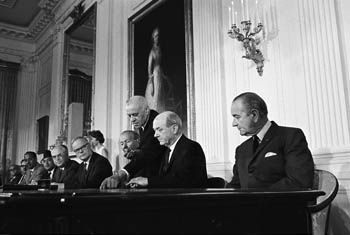Funding for space exploration peaked in the 1960s and has tapered off in decades since. This can be explained by the concept of rational ignorance.
Tied to the fight against Communism, the space program of the 1960s was largely politically motivated. In 1964, it accounted for a staggering 4.31% of the federal budget. At the time, the marginal benefit of continued space exploration was extremely high, as the frontier of space was inextricably linked with Cold War prestige and national security. However, after the Moon landing, the sense of accomplishment diminished the drive for continued space exploration, shifting the marginal benefit curve to the left.
At the same time, marginal costs began to rise. Starting in the 1970s, research and development funding in the U.S. grew rapidly, with competing priorities like health and national defense absorbing more federal resources. This increase in opportunity costs led to a decline in space exploration as a share of federal funding, dropping to current levels of 0.5-1% of the budget. The rise in opportunity costs caused a leftward shift of the marginal cost curve.
The fall in marginal benefits and the rise in marginal costs shifted the level of optimal ignorance about space. At present, it is rational for the United States to remain relatively ignorant about space until there is a shift of the equilibrium that favors increased knowledge.


